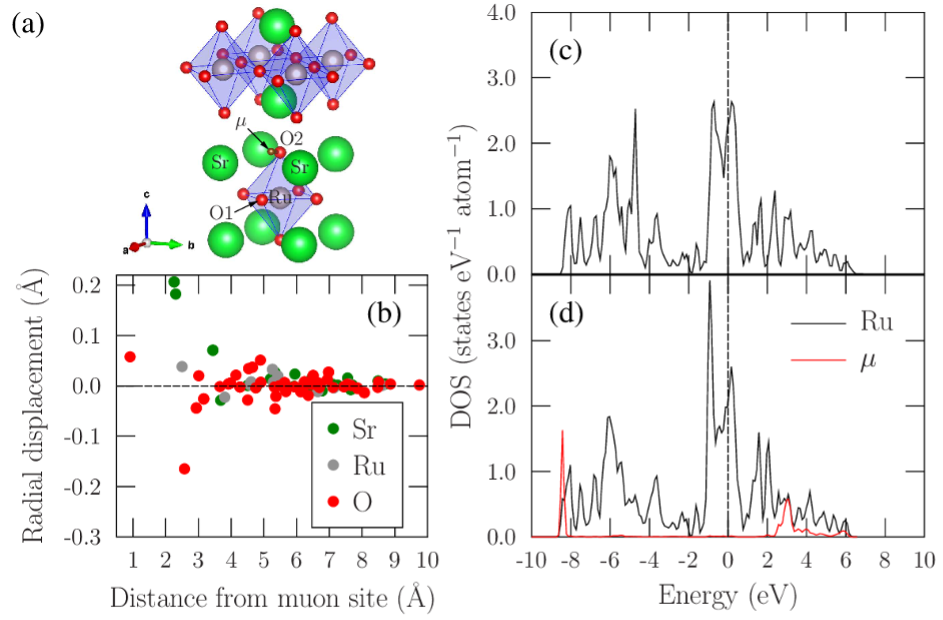Muons found to be faithful probes of exotic superconductors

Researchers in the Centre for Materials Physics have demonstrated that spontaneous magnetic fields, detected by implanting sub-atomic muons in superconducting materials, are likely to be intrinsic to an exotic, time-reversal symmetry broken, superconducting state.
Owing to the Meissner effect, the expulsion of magnetic fields from a superconductor, it is often claimed that superconductivity and magnetism are antagonistic states of matter. However, there are a growing number of systems for which small internal magnetic fields have been detected in the superconducting state. These fields are signatures of time-reversal symmetry breaking (TRSB), a symmetry that is preserved in the case of conventional superconductors described by Bardeen-Cooper-Schrieffer (BCS) theory, which describes the superconducting state as a condensate of pairs of electrons called ‘Cooper pairs’. The presence of TRSB implies the occurrence of superconductivity with exotic symmetries and the possibility of novel electron-pairing mechanisms. However, in most cases, TRSB has been observed only using implanted muons.
Muons, subatomic charged particles that are produced in particle accelerators, are extremely sensitive probes of magnetism and thus ideally suited to detecting these small internal magnetic fields. However, a common concern regarding the muon spectroscopy technique is whether the degree to which the implanted muon perturbs the system which it aims to measure, and one might therefore question whether these internal magnetic fields are not intrinsic to the sample under study but are instead a result of a muon-induced effect.
In a recent collaboration between Durham University researchers Ben Huddart, Tom Lancaster and Stewart Clark and researchers at Oxford University and the University of Parma, a systematic study of the muon stopping states in a series of superconducting materials that exhibit time-reversal symmetry breaking was carried out. This was achieved by calculating muon stopping sites using density functional theory (a procedure known as DFT+μ), which is a recent method developed by many of the authors of this study. They show that in a wide range of systems, which included the widely studied unconventional superconductor Sr2RuO4 (shown in the figure), any structural or electronic distortions caused by the muon are very small and are unlikely to lead to the generation of local magnetic fields. These results strongly suggest that the spontaneous magnetic fields observed in previous muon-spin spectroscopy experiments are not artefacts due to the presence of a muon, but instead reflect the time-reversal symmetry breaking present in the superconducting state.
The results of this study have been published in Physical Review Letters.
“Intrinsic Nature of Spontaneous Magnetic Fields in Superconductors with Time-Reversal Symmetry Breaking”, B. M. Huddart, I. J. Onuorah, M. M. Isah, P. Bonfà, S. J. Blundell, S. J. Clark, R. De Renzi, and T. Lancaster, Phys. Rev. Lett. 127, 237002 (2021).


/prod01/prodbucket01/media/durham-university/departments-/physics/teaching-labs/VT2A9034-1998X733.jpeg)